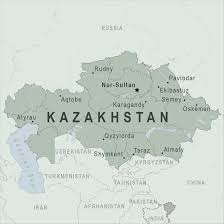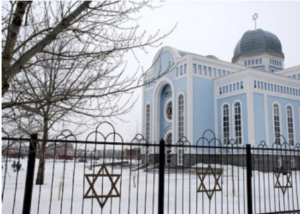 The history of the Jewish people of Kazakhstan is a long difficult history. Beginning in the 17th century the majority of the Jews of Kazakh were Russian. At that time there were probably no synagogues so most services would have taken place in private homes. These early Jews were mostly Ashkenazic.
The history of the Jewish people of Kazakhstan is a long difficult history. Beginning in the 17th century the majority of the Jews of Kazakh were Russian. At that time there were probably no synagogues so most services would have taken place in private homes. These early Jews were mostly Ashkenazic.
The diversity of Kazakhstan’s Jewish community is a result of the region’s traumatic 20th century. Relatively few Jews lived in Kazakhstan prior to the 1930s; most descended from Russian military conscripts who helped conquer the region in the late 19th century. The number began to swell during Stalin’s great terror in the late ‘30s, with thousands of Jews from across the Soviet Union dispatched to labor camps or otherwise exiled to Kazakhstan.
Others fled to Central Asia to escape the invading Nazi army during World War II. In Soviet times the legal Jewish institutional setting consisted of the functioning synagogues in Alma-Ata, Chimkent, Turkestan, and Kyzylorda.

While there were 3,600 Jews living in Kazakhstan in 1936, in 1939 the number grew to 19,200; and further to 28,000 in 1959. The Jewish population decreased gradually: there were 27,700 Jews there in 1970, 23,500 in 1979, and 19,900 in 1989. This increase was due to assimilation, emigration, and a low birth rate. Approximately 20,000 people emigrated from Kazakhstan to Israel in the late 1980s and early 1990s.
There are 3,300-10,000 Jews currently in Kazakhstan. The majority of them live in Almaty and the rest are spread over a number of regional areas. Most of the Kazakh Jews live in the larger cities where 13 community centres have been opened. There are two synagogues. There are also 14 Jewish day schools attended by more than 700 students as well as a Jewish kindergarten. There is supposedly little anti-semitism in Kazakhstan.